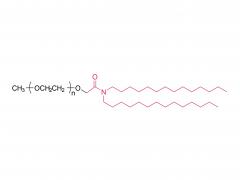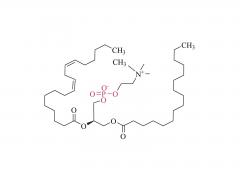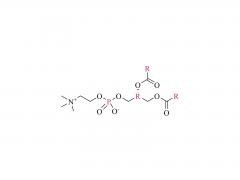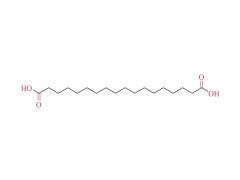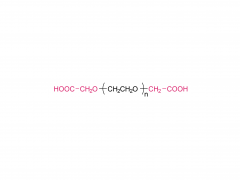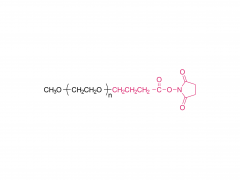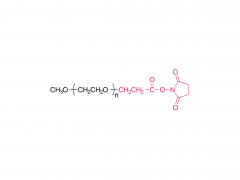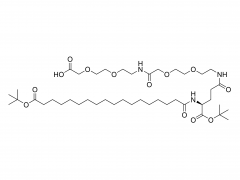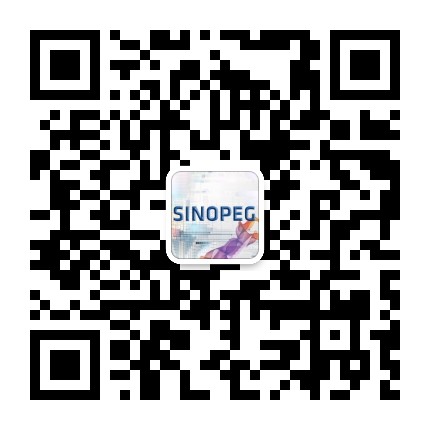The key components of an ADC include antibodies, linkers, and cytotoxic drugs (payloads). Antibodies help the ADC achieve target-specific binding, while payloads help destroy cancer cells. The linker acts as a bridge between the antibody and the load and is critical to the stability and effectiveness of the ADC. In addition, the release of the load is also mainly dependent on the type and nature of the connector.

The connector technology used in ADCs should have three key characteristics:
(1) High stability in the cycle.
(2) High water solubility, which helps biological coupling and avoids the formation of inactive ADC aggregates.
(3) Allow efficient release of highly cytotoxic load-junction metabolites.
Patrick J. Burke et al. reportedly introduced a PEG24 polymer as a side chain of monomethylamantadane E (MMAE) link to produce a uniform drug-antibody ratio (DAR 8) conjugate. This design slowed plasma clearance and showed stronger antitumor activity in xenograft models. In addition, the study identified a pegylated glucuronate-MMAE link based on self-stabilizing maleimide (mDPR) and PEG12 side chains that show high potency and are being considered for future ADC projects.

General synthetic route of mDPR-(PEGx) -glucuronate-MMAE ligand
At present, 15 ADC drugs have been approved for market in the world, of which 8 ADC drugs have been approved in China. Trodelvy® (sacituzumab govitecan) and Zynlonta® (loncastuximab tesirine) both use PEG derivatives as linkers, and PEG technology is becoming increasingly important in ADC development.

Image source: https://www.sohu.com/a/774100194_121124565

Photo credit: http://www.rrrry.com/art_67885.htm

Photo credit: http://www.rrrry.com/art_67885.htm
Advantages of PEG derivatives as ADC Linker
01. Improve the hydrophilicity of the drug
While most drug carriers lead to increased hydrophobicity of ADCs, PEG derivatives can significantly increase the hydrophilicity of ADCs, thereby reducing non-specific absorption and rapid elimination, and improving drug distribution in the body.
02. Regulating drug-antibody ratio (DAR)
The length and structure of the PEG chain can regulate the drug-antibody ratio (DAR), which affects the efficacy and toxicity of the ADC. By precisely controlling the properties of PEG, ADCs with uniform DAR can be designed to optimize their therapeutic effectiveness.
03. Improve stability
PEG chains can protect the stability of drugs in plasma, reduce the degradation and release of drugs, and thus extend the half-life of drugs. This is essential for achieving more effective anti-tumor activity.
04. Diversified connector design
PEG derivatives can bind to a variety of drugs and linkers, creating a variety of ADC designs. This flexibility allows researchers to tailor it to specific treatment needs.
SINOPEG is committed to providing high quality PEG Linker, and now offers PEGn=1 to 96 series, covering a wide range of specifications and functions to meet different research and application needs. At the same time, we are actively developing more innovative products to promote progress in the field of biomedicine. Please contact us at the end of this article to learn more about our PEG Linker products and customized services.
product list
Reference:
1. Samantasinghar A, Sunildutt NP, Ahmed F, et al. A comprehensive review of key factors affecting the efficacy of antibody drug conjugate. Biomed Pharmacother. 2023; 161:114408. Doi: 10.1016 / j.b iopha. 2023.114408
2. Bargh JD , Isidro-Llobet A , Parker JS , Spring DR . Cleavable linkers in antibody-drug conjugates. Chem Soc Rev. 2019; 48(16):4361-4374. doi:10.1039/c8cs00676h
3. Burke PJ, Hamilton JZ, Jeffrey SC, et al. Optimization of a PEGylated Glucuronide-Monomethylauristatin E Linker for Antibody-Drug Conjugates. Mol Cancer Ther. 2017; 16(1):116-123. doi:10.1158/1535-7163.MCT-16-0343







